OCT. 23 to OCT. 29
Chen Tzu-fu (陳子福) was often expected to create colorful and captivating movie posters given only the film title and a headshot of the lead actor.
During the 50s and 60s, production houses had to show the theaters their posters months in advance in order to get a booking. That meant that Chen had to work his magic before filming even started, using his imagination to paint vivid movie scenes that did not exist yet.
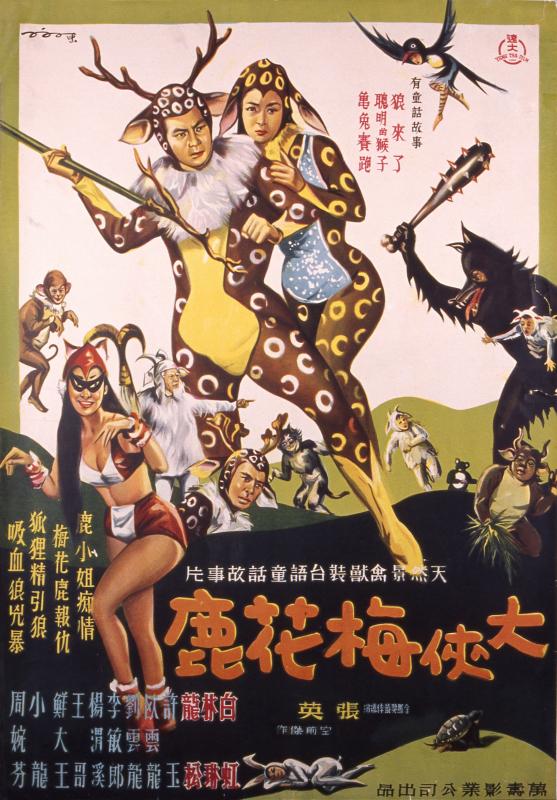
Photo courtesy of Tawan Film and Audiovisual Institute
Chen tells Lin Hsin-yi (林欣誼) in his biography that the posters were like the packaging for the movie — they needed to be attractive enough to “trick” the audience into the theater.
“I always told production houses that my posters could guarantee them box office success for the first three days,” he says. “If sales decline after the fourth day, then it’s a problem with the film.”
During an illustrious 40-year career, Chen hand-painted posters for more than 5,000 films, many of which are considered landmarks in Taiwanese cinematic history. He was capable of producing up to 40 pieces per week, once saying that about 90 percent of the 1,000 or so films made during the Hoklo-language (commonly known as Taiwanese) movie craze of the 1960s came from his hand.
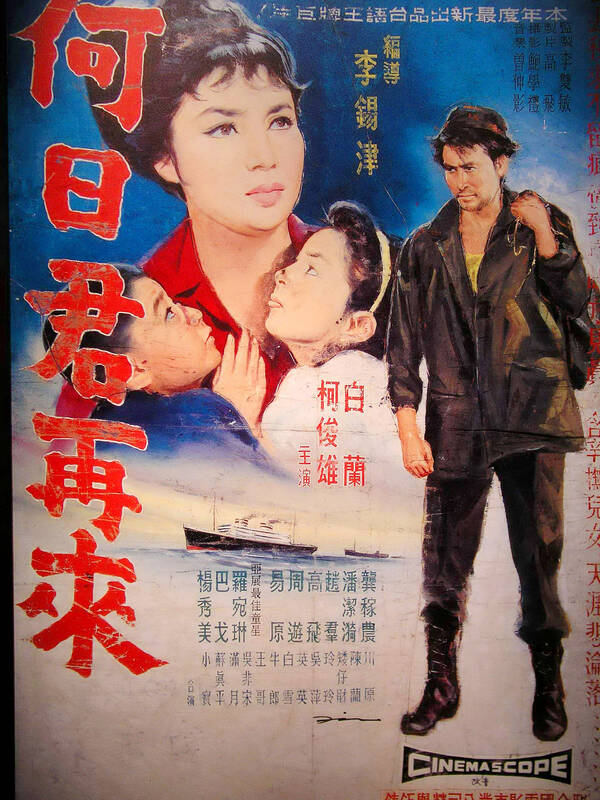
Photo courtesy of Taiwan Film and Audiovisual Institute
Chen continued to paint after he retired in 1994 and in 2006 he recieved the Lifetime Achievement Award at the Golden Horse awards ceremony. He died on Oct. 25 last year at the age of 97.
BUDDING ARTIST
Chen nearly died before his career even started. It was late 1944, and the 18-year-old was heading to Japan on the Gokoku Maru cruiser as a volunteer soldier when an Allied plane struck and sank the ship in the middle of the night. Chen managed to grab on to a plank, and he drifted for nearly 10 hours in freezing water until he was rescued. Only 88 out of more than 300 passengers survived the incident.
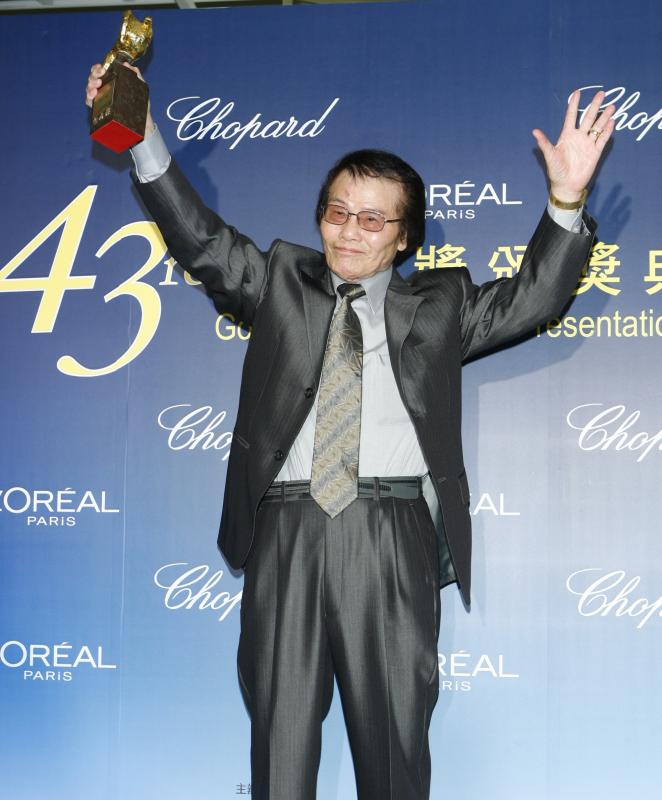
Photo: Tai Tai-hsiang, Taipei Times
Born in 1926 in today’s Wanhua, Taipei, Chen displayed artistic talent from a young age; his paintings were often displayed at the back of the classroom. In 1937, the students were asked to depict the formation of the Axis powers between Japan, Germany and Italy. Chen’s depiction of then-Japanese prime minister Fumimaro Konoe, Adolf Hitler and Benito Mussolini along with their respective national flags won the grand prize, for which he received a watercolor set.
After elementary school, Chen began working at a pharmacy to save up money for his secondary education. He enjoyed observing people in the street, painting their faces from memory after he got home at night. There was a movie poster workshop nearby, and during his free time he went there to watch the artist paint for hours.
Chen saw his first movie at the age of 15 — it was China Nights starring Shirley Yamaguchi, also known as Li Xianglan (李香蘭). Even though he could easily sneak into theaters, he always saved up to pay for the tickets. He continued to insist on this principle througout his career even when offered free entry.
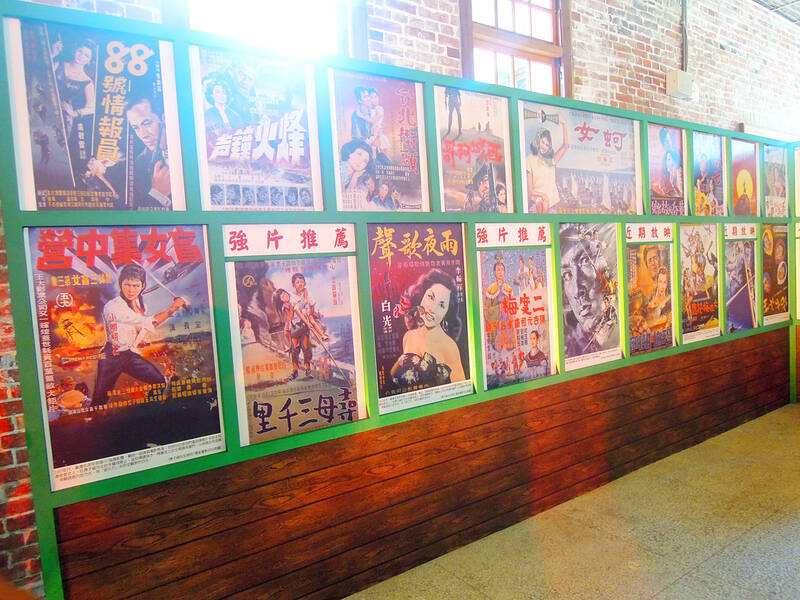
Photo: Liang Pei-chi, Taipei Times
INDUSTRY START
Chen experienced another brush with death while serving in the Imperial Japanese Marines — when the US dropped an atomic bomb on Nagasaki, he was stationed just north of the city in Matsuura.
After the Japanese surrendered, Chen spent months in an Allied internment camp before being allowed to go home. He arrived in Taipei on New Year’s Day, 1946. The Chinese Nationalist Party (KMT) had taken over Taiwan by then, and he was suddenly a Republic of China (ROC) citizen. ?Educated in Japanese and not speaking any Mandarin, Chen found it hard to gain employment at first. He was offered a job in the ROC Navy and underwent training, but found it difficult to accept the abrupt change of national allegiance. He turned down the opportunity.
Chen then got by making propaganda posters for the local fire department and working part-time in a commercial billboard company. Many Shanghai and Hong Kong film companies were setting up branches in Taiwan around that time, and he was hired as an assistant for the Shanghai Guo Tai Movie Company.
Chen did it all; he retrieved reels from customs, arranged show times with theaters, sold tickets, arranged filming locations and restored damaged reels. The films from China came with movie posters, but they were often damaged and Chen helped repair them. After a year or two, he was fluent in Mandarin and Shanghainese as well as the ins and outs of the movie business.
He made his first poster for Blood Shed on Oriental Cherry (血濺櫻花) during this time, spending about half a month on it. Ko Fu (柯副),who owned Datong Film Studio, was impressed by it and offered him a full time position. The company had imported a batch of 40 or so martial arts films from Shanghai and Guangdong, and Ko wanted him to make the posters. Chen was reluctant at first as there were already a dozen more experienced professional poster artists in Taipei, but Ko insisted that he give it a try.
IN HIGH DEMAND
The Taiwanese cinema craze began in 1956. Chen made the poster for the Taiwanese opera flick Hsueh Ping-kuei and Wang Pao-chuan (薛平貴與王寶釧), a seminal production for this period. His popularity grew, and made enough money to support his wife, six children and elderly parents.
Chen continued to hone his craft, frequenting bookstores to study the popular design elements of the day.
“You must adapt your style to the times,” he says. “Different colors are in fashion every year. In my later career, the movie-going population was mostly young people, and the art had to be bold and catchy to captivate their attention.”
Chen says the most crucial step in making a movie poster was capturing the essence of the character — especially the expression in their eyes. He started every poster from the eyes, then the face, varying the warmth of the skin tones according to their personalities. The background was last.
In 1960, the Central Pictures Corporation (中央電影公司) produced Taiwan’s first color Mandarin film Oyster Girl (蚵女), with Chen doing the poster art. Mandarin films supplanted Taiwanese cinema in the 1970s, but Chen remained in high demand, continuing to experiment and evolve his style and composition.
Like many creatives during the Martial Law era, Chen got in trouble for his work. One time, he was warned by the police for putting red stars in the background of a poster. While making the poster for King Kong, Chen clipped out a Hong Kong street scene from a magazine for the background, failing to notice that one of the buildings had a tiny “Long Live Chairman Mao” slogan on it. He was detained and questioned for four hours.
With the advent of print posters, Chen closed down shop in 1994. His last piece was for the German film The House of the Spirits.
Taiwan in Time, a column about Taiwan’s history that is published every Sunday, spotlights important or interesting events around the nation that either have anniversaries this week or are tied to current events.
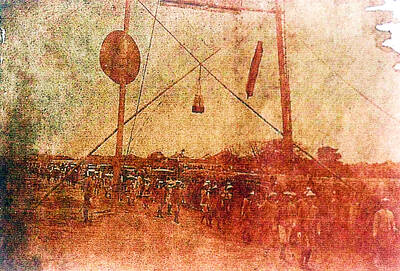
June 23 to June 29 After capturing the walled city of Hsinchu on June 22, 1895, the Japanese hoped to quickly push south and seize control of Taiwan’s entire west coast — but their advance was stalled for more than a month. Not only did local Hakka fighters continue to cause them headaches, resistance forces even attempted to retake the city three times. “We had planned to occupy Anping (Tainan) and Takao (Kaohsiung) as soon as possible, but ever since we took Hsinchu, nearby bandits proclaiming to be ‘righteous people’ (義民) have been destroying train tracks and electrical cables, and gathering in villages

Dr. Y. Tony Yang, Associate Dean of Health Policy and Population Science at George Washington University, argued last week in a piece for the Taipei Times about former president Ma Ying-jeou (馬英九) leading a student delegation to the People’s Republic of China (PRC) that, “The real question is not whether Ma’s visit helps or hurts Taiwan — it is why Taiwan lacks a sophisticated, multi-track approach to one of the most complex geopolitical relationships in the world” (“Ma’s Visit, DPP’s Blind Spot,” June 18, page 8). Yang contends that the Democratic Progressive Party (DPP) has a blind spot: “By treating any

This year will go down in the history books. Taiwan faces enormous turmoil and uncertainty in the coming months. Which political parties are in a good position to handle big changes? All of the main parties are beset with challenges. Taking stock, this column examined the Taiwan People’s Party (TPP) (“Huang Kuo-chang’s choking the life out of the TPP,” May 28, page 12), the Democratic Progressive Party (DPP) (“Challenges amid choppy waters for the DPP,” June 14, page 12) and the Chinese Nationalist Party (KMT) (“KMT struggles to seize opportunities as ‘interesting times’ loom,” June 20, page 11). Times like these can

Swooping low over the banks of a Nile River tributary, an aid flight run by retired American military officers released a stream of food-stuffed sacks over a town emptied by fighting in South Sudan, a country wracked by conflict. Last week’s air drop was the latest in a controversial development — private contracting firms led by former US intelligence officers and military veterans delivering aid to some of the world’s deadliest conflict zones, in operations organized with governments that are combatants in the conflicts. The moves are roiling the global aid community, which warns of a more militarized, politicized and profit-seeking trend